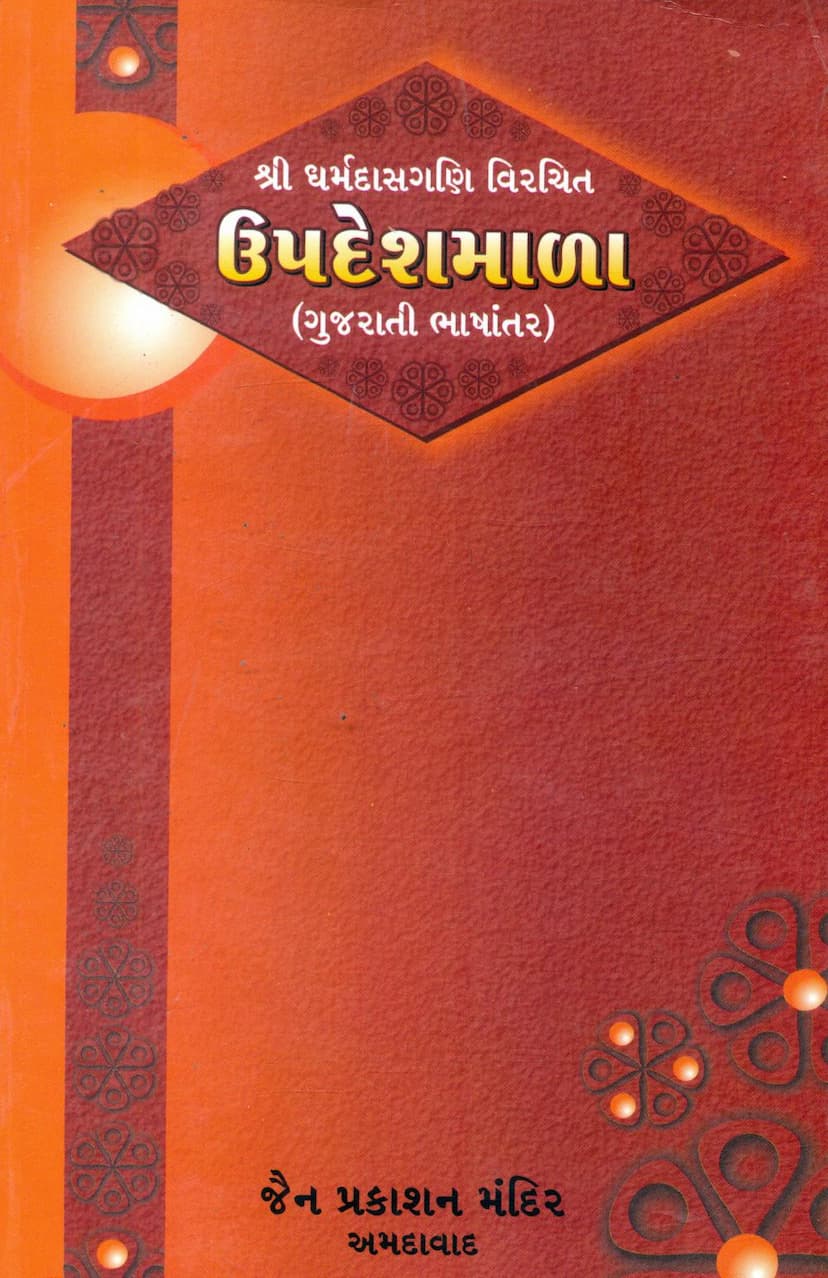Updeshmala
Added to library: September 2, 2025

Summary
Here's a comprehensive summary of the Jain text "Updeshmala" by Shri Dharmadas Gani, based on the provided text:
Book Title: Updeshmala Author: Shri Dharmadas Gani Publisher: Jain Prakashan Mandir, Ahmedabad Language: Gujarati Translation (original likely in Prakrit)
Overview and Purpose:
The "Updeshmisala" (माला of Updesh - Garland of Teachings) is a significant Jain text composed by Shri Dharmadas Gani, a direct disciple of Lord Mahavir Swami. It was originally written in Prakrit and contains 540 original verses with 4 additional verses considered interpolations. The primary purpose of this work was to impart spiritual guidance and moral teachings to Dharmadas Gani's son, Ransingh, during his worldly life. Similar to how Shri Shubhob Suri composed the "Dashavaikalik Sutra" for his son Manik, Dharmadas Gani created this text with the foresight that it would be beneficial for Ransingh in the future.
Content and Structure:
The text is primarily a collection of didactic stories and teachings designed to illustrate Jain principles. It is structured in a way that makes spiritual lessons accessible, particularly to younger audiences who are drawn to narratives.
- Storytelling Approach: The book emphasizes the power of stories in conveying moral and spiritual messages. It begins with the detailed story of Prince Ransingh, the very reason for the creation of this work.
- Extensive Collection of Narratives: The "Updeshmala" includes approximately 70 diverse stories, presented in chronological or thematic order. These stories feature prominent figures from Jain tradition, including:
- Historical and mythological Jain figures like Chandanbala, Bharat Chakravarti, Prasannachandra Rajarshi, Bahubali, Sanatkumar Chakravarti, Brahmadaatta Chakravarti, Udaii, Jambu Swami, Sthulibhadra, Gaj Sukumal, and Mahavir Swami himself.
- Stories illustrating various ethical concepts through parables and examples from the lives of ascetics, kings, and common people.
- Spiritual Path and Teachings: Towards the end of the book, approximately 150 verses are dedicated to expounding the path of self-welfare and spiritual upliftment through powerful and concise teachings.
Historical and Scholarly Context:
The text has a rich commentary tradition:
- Sanskrit Commentaries: Shri Shriman Shrutisagar Muni composed a Sanskrit commentary called "Heyopadeya Tikka" in VS 974 (517 AD). This commentary explained the meaning of the original verses and provided short anecdotes relevant to the context.
- Prakrit Additions: Later, Acharya Shri Vardhmansuri, in VS 1055 (998 AD), added more elaborate Prakrit narratives to the Sanskrit commentary, replacing some of the shorter Sanskrit stories where necessary.
- Published Editions: The complete text, including the commentaries and narratives, was published by Shri Jinshasan Aradhana Trust, Mumbai, in VS 2047 (1991 AD). A Gujarati translation was published by Shri Jain Atmanand Sabha, Bhavnagar, in VS 2a41 (1985 AD), with its second revised edition appearing in VS 2060 (2004 AD). The specific translator of the Gujarati version is not mentioned in the provided text.
- Current Publication: The present publication referenced is based on the aforementioned three sources, with some editorial improvements for clarity and language refinement. The stories are presented under separate headings for easier navigation, and indices of themes and stories are also provided.
Key Themes and Messages:
The "Updeshmala" aims to instill a deep understanding of Jain philosophy and ethics through relatable narratives. Key themes include:
- Detachment from Worldly Pleasures: Many stories highlight the ephemeral nature of worldly possessions, relationships, and pleasures, encouraging renunciation and the pursuit of spiritual liberation.
- The Importance of Virtue: The text consistently emphasizes the cultivation of virtues like non-violence (ahimsa), truthfulness, non-possession (aparigraha), chastity (brahmacharya), forgiveness (kshama), humility (vinay), and detachment.
- The Power of Karma: The concept of karma and its inescapable consequences for actions is a recurring theme, motivating individuals to engage in righteous deeds.
- The Role of Renunciation: The path of renunciation, often depicted through the lives of monks and ascetics, is presented as the ultimate means to achieve spiritual liberation.
- The Guidance of Spiritual Teachers: The vital role of gurus and spiritual preceptors in guiding disciples towards the right path is consistently highlighted.
- The Nature of Reality: The text touches upon the transient nature of existence and the illusion of worldly happiness, urging readers to seek the eternal and the spiritual.
- The Value of Stories in Education: The book itself is a testament to the pedagogical effectiveness of using stories to impart moral and spiritual lessons.
Overall Impact:
"Updeshmala" serves as a valuable resource for Jain education, offering practical examples and profound spiritual insights. Its blend of storytelling and ethical instruction makes it a timeless guide for spiritual aspirants seeking to understand and practice Jain principles in their lives. The emphasis on learning from the lives of great souls underscores the importance of emulating their virtues in the journey towards self-realization and liberation.